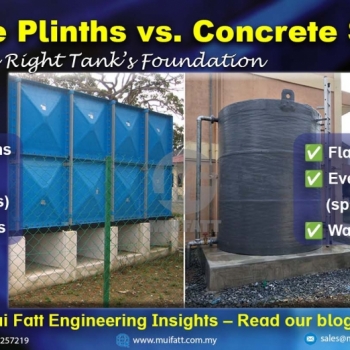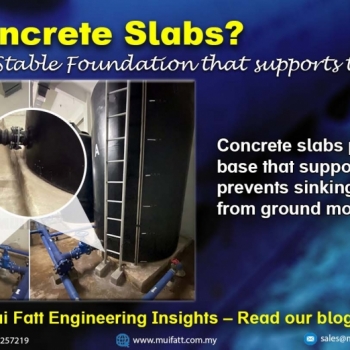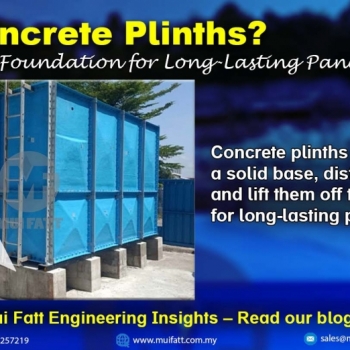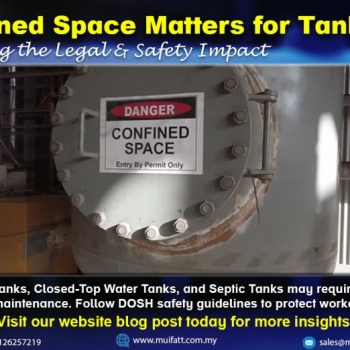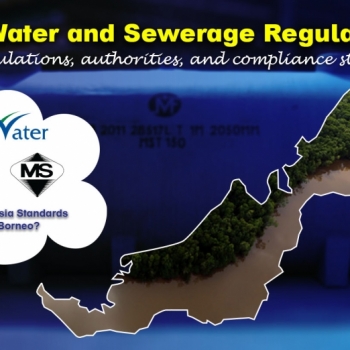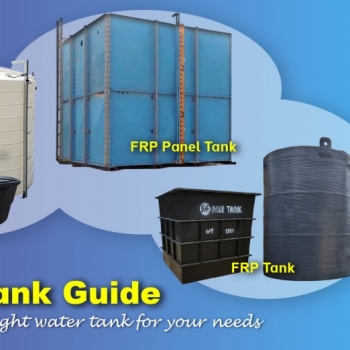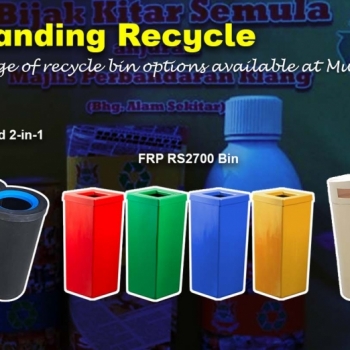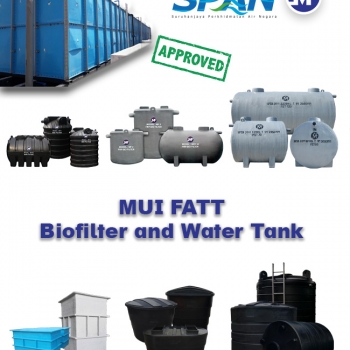Compare concrete plinths and slabs to understand their roles in water, septic, and sectional tank installations. Learn key differences in design, application, and compliance.
Mui Fatt Engineering Insights - Concrete Slabs for Water vs Septic Tanks
10 Jun 2025
- Key Takeaways
- Purpose of Concrete Slabs in Water Tanks
- Purpose of Concrete Slabs in Septic Tanks
- Key Differences in Design and Functionality
- Potential Hazards of Using the Wrong Slab
- When to Use Each Type of Slab
- Frequently Asked Questions (FAQs)
Key Takeaways
-
Water tank slabs provide level support, ease of access, and prevent tank tilt or deformation.
-
Septic tank slabs are structurally reinforced, watertight, and resist underground movement.
-
Both types must adhere to Malaysian Standard, and SPAN approval is strongly recommended for compliance.
-
Proper slab design prevents leaks, structural failure, and regulatory setbacks.
Concrete slabs are one of the most crucial yet often overlooked elements in tank installation. While both water and septic tanks require a reliable foundation, the design expectations for each slab type differ greatly due to their intended usage, load behavior, and long-term durability needs.
This article highlights the major differences between slab foundations used for water tanks and septic tanks, especially in the Malaysian context. You’ll learn how each slab functions, what standards apply, and when to choose one over the other, helping you make informed decisions and avoid costly structural or environmental issues.
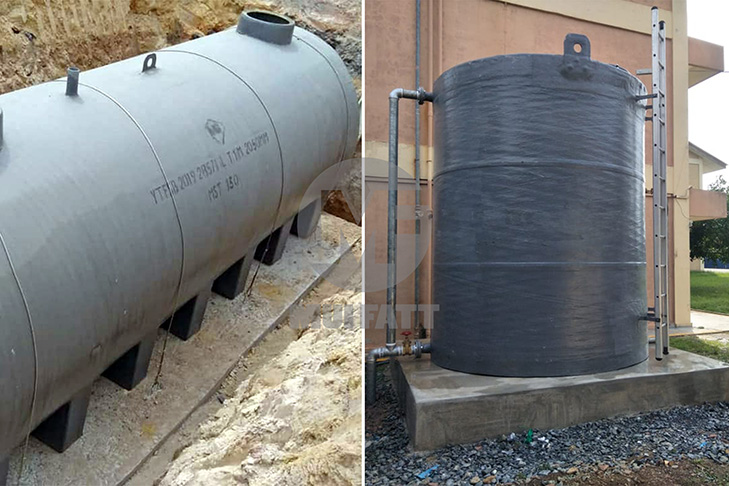
Purpose of Concrete Slabs in Water Tanks
Concrete slabs beneath water tanks provide a stable, load-distributing surface that can support the tank’s full operational weight over time. These slabs provide:
-
A level base to maintain tank integrity and structural balance
-
Even load distribution to avoid deformation or stress cracks
-
A clean platform to facilitate piping alignment, especially in pump-fed or gravity-fed systems
-
A dry, raised buffer from ground moisture, termites, and vegetation
In commercial and municipal settings, concrete slab construction for water tanks should follow Malaysian Standard guidelines. Many potable water installations require SPAN approval, and non-compliant slab design can lead to delayed approvals or pose long-term safety risks.
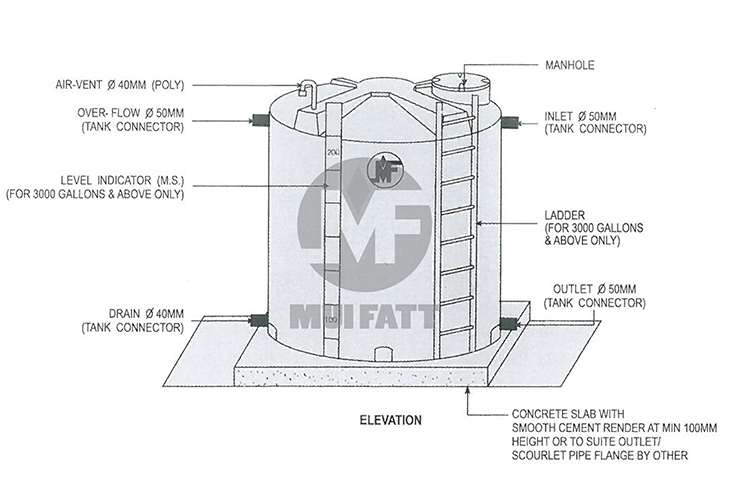
Purpose of Concrete Slabs in Septic Tanks
Unlike water tanks, septic tanks store wastewater, which introduces critical environmental, safety, and sealing concerns. Concrete slabs for septic tanks are designed not only to support structural weight, but also to:
-
Prevent ground shifting or uneven settlement, especially when buried
-
Maintain the watertight seal of the base to avoid leakage
-
Create a stable trench base for underground or semi-sunken units
-
Help facilitate long-term inspection and desludging processes
These slabs are often thicker, reinforced with steel mesh or rebar, and must comply with Malaysian Standard and SPAN Technical Requirements. Non-compliance can result in environmental contamination, regulatory action, and health hazards.
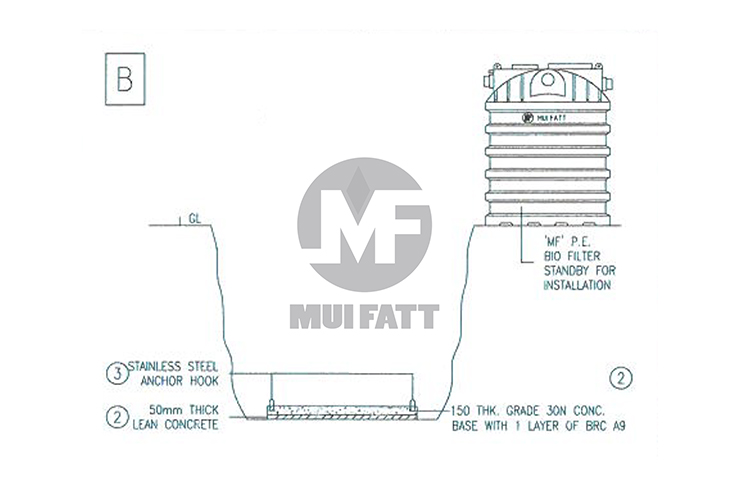
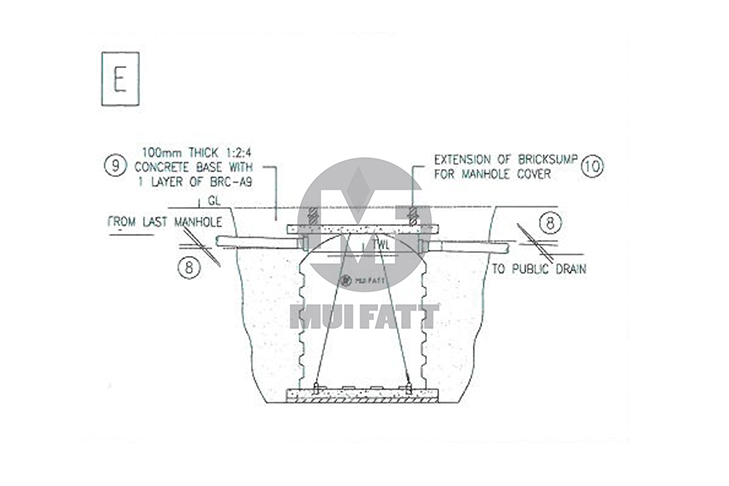
Key Differences in Design and Functionality
| Aspect | Water Tank Slab | Septic Tank Slab |
| Core Function | Base stability, pipe access | Sealing, load resistance, and sinking prevention |
| Structural Load | Medium weight (fluid only) | Heavier total load (waste + burial soil) |
| Typical Reinforcement | Optional or minimal | Often required (rebar or mesh) |
| Risk of Failure | Misaligned piping, leaning | Contamination, tank rupture, soil pollution |
Potential Hazards of Using the Wrong Slab
Concrete slabs that are incorrectly sized, under-reinforced, or poorly cast can lead to serious consequences:
-
For water tanks:
-
Pipe inlet/outlet misalignment
-
Uneven pressure points that cause long-term deformation
-
Movement or tilting that may affect safety valves and sensors
-
-
For septic tanks:
-
Structural failure or cracks under earth pressure
-
Base shifting or tank collapse
-
Dangerous effluent leakage into groundwater or soil
-
When to Use Each Type of Slab
-
Use a Water Tank Slab when:
-
Installing freestanding above-ground PE or GRP tanks
-
A smooth, flat surface is needed for maintenance and inspection
-
You require precise alignment for plumbing and overflow systems
-
-
Use a Septic Tank Slab when:
-
The tank is buried or partially buried underground
-
Environmental safety and watertight installation are critical
-
Soil shifting, hydrostatic pressure, or long-term load must be considered
-
Don’t just install a tank—build it on the right foundation! Get in touch with our team today via WhatsApp or email at sales@muifatt.com.my for professional consultation.
Frequently Asked Questions (FAQs)
Can the same slab design be used for both?
No. Septic tanks often require thicker, reinforced slabs due to underground placement and higher containment risks.
How thick should a slab be?
It varies, but septic tank slabs are typically 150–200mm thick with reinforcement. Water tank slabs generally range from 100–150mm, depending on tank size and loading conditions.
What happens if a slab is missing or incorrect?
You risk misalignment, system failure, tank rupture, or environmental leakage—all of which are costly and dangerous.
#Concreteslabcomparison #watertankslab #septictankslab #slabfoundationdifferences #Malaysiatankslab #slabinstallation
Disclaimer:-
The information provided on this website is for general informational purposes only and does not constitute legal advice. While we strive to ensure the accuracy and reliability of the information provided, we make no representations or warranties of any kind, express or implied, about the completeness, accuracy, reliability, suitability, or availability concerning the information contained herein. Any reliance you place on such information is therefore strictly at your own risk. This website may contain links to other third-party websites. Such links are only for the convenience of the reader, user, or browser; which we do not warrant, recommend, endorse, or assume liability for the contents of the third-party sites.
Keep in touch with us should you be keen on receiving timely updates from us
- Website - https://www.muifatt.com.my/home/
- Facebook - https://www.facebook.com/muifattmarketing
- Instagram - https://www.instagram.com/muifattmarketing/
- Google - https://goo.gl/maps/WxVY13gNcaRTS7Jp6
- Youtube - http://www.youtube.com/@MuiFattMarketing
- TikTok - https://www.tiktok.com/@muifattmarketing
- LinkedIn - https://www.linkedin.com/company/mui-fatt-marketing-sdn-bhd-
- Linktree - https://linktr.ee/muifattmarketing
- Shopee - https://www.shopee.com.my/muifattmarketing
- Lazada - https://www.lazada.com.my/shop/mui-fatt-marketing
Recent Blog
Mui Fatt Engineering Insights - Tank Concrete Slab
Concrete slabs provide stability and safety for water and septic tanks. This blog explains why they are essential, whether they are mandatory, and how they impact installation and maintenance.
Mui Fatt Engineering Insights - Panel Tank Concrete Plinth
Explore the essential role of concrete plinths and C-channels in sectional panel tanks. Learn why they’re standard, how they enhance stability and maintenance, and how Malaysia’s regulations influence their use.
Why Confined Space Safety Regulations Matter in Tank Work
Working inside FRP or PE tanks, like panel tanks, septic tanks, or SSTS, may involve confined space hazards. Understand why compliance with DOSH regulations is essential for your project’s safety and success.
Essential Guidelines for Water & Septic Tanks in Borneo
Understand the regulations and guidelines for water and septic tanks in Borneo, plus compliance with SPAN, IWK, and SIRIM standards in Malaysia.
Essential Guide to Choosing the Right Water Tank for Your Needs
A step-by-step guide on water tank considerations, including material, size, application, and more. Learn how to pick the perfect tank for your needs.
Understanding Recycle Bins: Types, Uses, and Regulations in Malaysia
Learn the differences between recycle and recycling bins, the types of bins by color and material, and why they're essential for waste management in Malaysia. Discover our FRP and PE recycle bins for your needs.
Why SPAN-Approved Water and Septic Tanks Are Essential for Your Project
In this blog, we explore why using SPAN-approved water and septic tanks is critical for compliance, safety, and reliability in construction projects across Malaysia. Learn how SPAN certification ensures the quality of your tanks, and why it’s essential for maintaining water service standards under Act 655. Discover how various end-user products such as water tanks and septic tanks adhere to this legislation and the consequences of non-compliance, emphasizing the importance of strict adherence for safeguarding Malaysia's water resources and public well-being.



